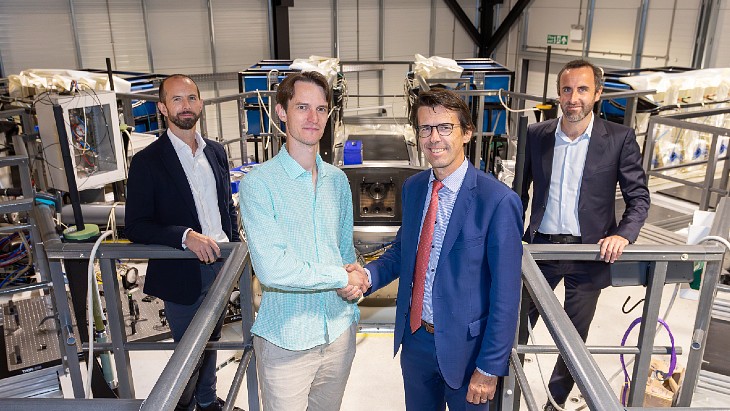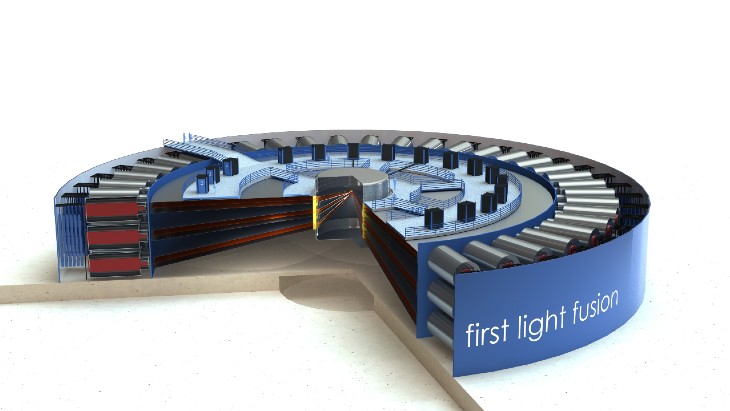
First Light, founded in 2011, is based at the UK Atomic Energy Agency's (UKAEA) Culham campus, near Oxford. Its approach to fusion is projectile fusion, which is a branch of inertial confinement fusion. Last December the National Ignition Facility in the USA became the first to demonstrate energy gain from fusion, although in its case it uses lasers in the process.
First Light's inertial confinement approach aims to create the extreme temperatures and pressures required for fusion by compressing a target using a hypervelocity projectile. Its plant design avoids the three biggest engineering challenges of fusion: preventing neutron damage, producing tritium, and managing extreme heat flux.
The company said its 'liquid lithium wall' approach, inside the reactor chamber where the fusion reaction will take place, gives it an inherent advantage in tritium production. The fusion reaction is surrounded by liquid lithium, allowing tritium self-sufficiency to be easily reached, and making it possible to design for excess tritium production.

The projectile could reach speeds of 200kms per second (Image: First Light Fusion)
The two companies said the Machine 4 demonstrator, when completed, "will house the largest pulsed power driver in the world, 75 metres in diameter". Tractebel will "leverage its international expertise in fusion", including from working on projects such as the International Thermonuclear Experimental Reactor in France, to help the successful delivery of the project.
Nick Hawker, CEO of First Light Fusion, said: "The design and development of Machine 4 ... is well under way as we aim for completion well before the end of this decade. We are delighted to be working with Tractebel through this critical phase, leveraging their unrivalled expertise in major fusion infrastructure projects."
Denis Dumont, Tractebel's chief global nuclear officer, said: "With this contract, Tractebel re-affirms its commitment to support the UK nuclear industry, fission and fusion, and help meet the UK’s ambition to be net-zero by 2050 ... thanks to our internationally recognised nuclear experience, we are able to provide innovative solutions to the most challenging projects. We look forward to developing our relationship with First Light Fusion."
First Light Fusion and the UKAEA signed an agreement in January for the design and construction of the Machine 4 facility. Machine 4 is not intended to generate power, but will help to develop technology needed for future inertial confinement fusion energy power plants. First Light said it will "have a stored electrical energy of c.100 mega joules with the capability of launching projectiles at 60kms per second. This speed on impact inside the target will accelerate to c.200kms per second as a result of First Light’s exclusive amplifier technology. The amplifier focuses the energy of the projectile into the fusion fuel, both boosting the pressure from impact to deliver to the fuel and shaping the waves to produce spherical implosions". Its current Machine 3 launches a projectile at c.20 kms per second.